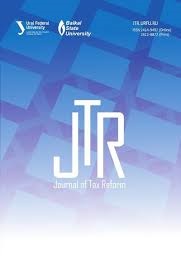
Lo más reciente
Corporate taxes are a relevant source of revenue for governments and play an important role in firms’ decisions, with implications on the fiscal balance and the economic activity of a country. Thus, measuring firms’ responses to the corporate income tax is crucial in designing tax reforms and assessing tax avoidance opportunities. This paper estimates the elasticity of the corporate income tax base with respect to the net-of tax rate, allowing us to measure how firms respond to changes in the corporate income tax in Colombia for the period 2005–2011. During these years, the Colombian government implemented three major heterogeneous tax law changes, making its institutional context a quasi-experimental scenario to identify the income tax elasticity. The empirical analysis uses a detailed firm-level unbalanced panel data and is based on Two-Stage Least Squares and Endogenous Quantile Regression. To address potential endogeneity due to the correlation between tax rates and changes in the distribution of corporate profits, we use changes in the marginal effective tax rates resulting from tax reforms, as an instrument. This approach considers macroeconomic conditions and tax parameters post-reforms, as well as the firms’ characteristics before the reforms. The results indicate that firms adjust their responses in the short-term conditional on the tax regime and firms’ characteristics. Results also point out that, when tax reforms are jointly analyzed, the effects offset on the average, with heterogeneous impacts according to the size of firms. Overall, the findings highlight the importance of evaluating the differential impacts of taxes and their benefits for different groups of firms when considering a tax reform, which becomes more critical in post-pandemic times given the fiscal needs emerging countries face. The high elasticities found in some tax reforms and among specific groups of firms suggest the presence of marginal deadweight losses due to tax avoidance opportunities.
 Camilo Gómeza,
Camilo Gómeza, 
